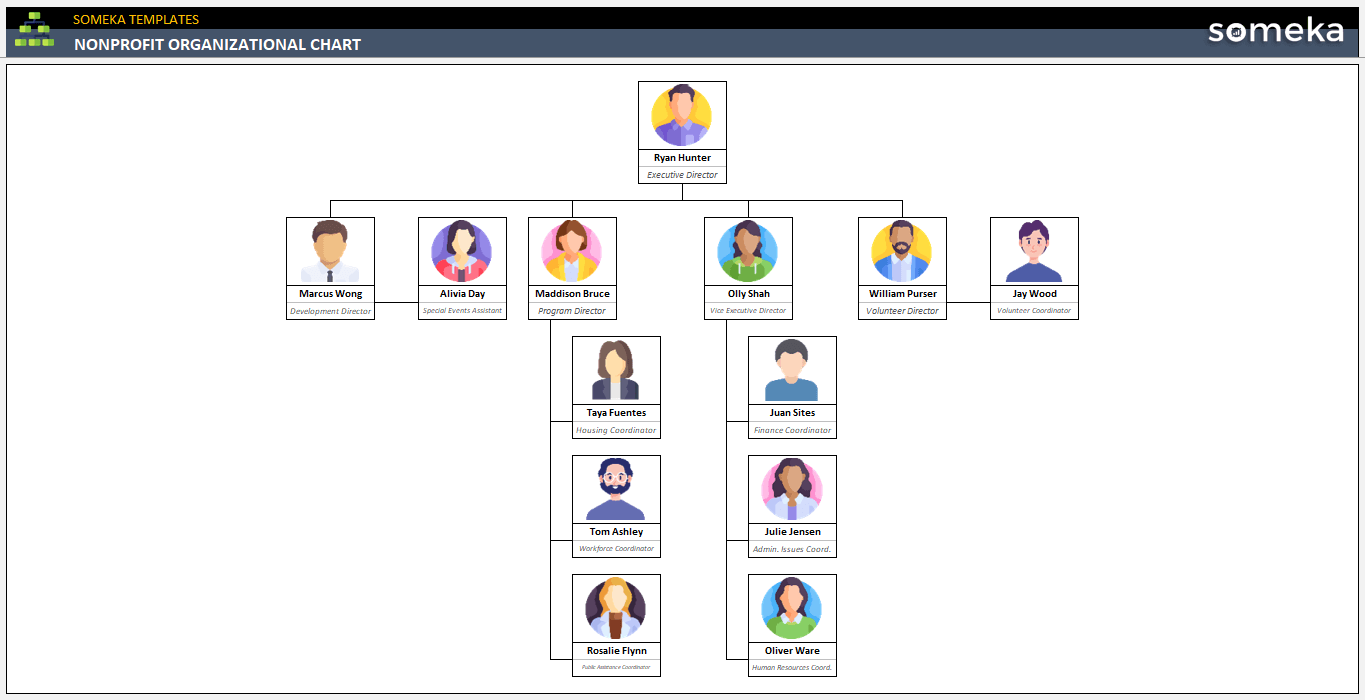
What is Chain of Command in Business? Understanding the fundamentals
The definition of chain of command is the a system in an organization in which the instructions go through the hierarchical levels. This term is mostly used in military units, but also very important in civil organizations. Let’s discover Chain of Command concept in business!
Table Of Content
1. What’s Chain of Command?
2. Structure and Hierarchy
3. Benefits of a Well-Established Chain of Command
4. Challenges and Misconceptions
5. Implementing Chain of Command
6. Impact on Different Stakeholders
7. What happens in Lack of Chain of Command?
8. Historical and Contemporary Applications
9. How to Create a Chain of Command Structure?
10. FAQ’s
1. What’s Chain of Command?
A clear hierarchy of power, responsibility, and communication is set by the chain of command, which is one of the most important ideas in organizational management. Command hierarchy is important for organizations to have this system in order to communicate clearly, keep things running smoothly, and set clear expectations for who is responsible for what.
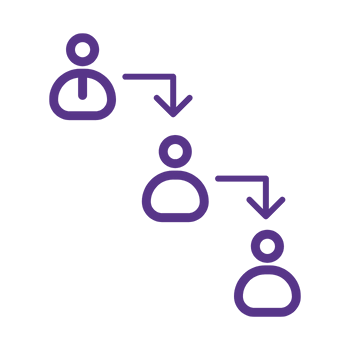
Since its start in the Industrial Revolution, the idea of a chain of authority has been important in both business and the military. A simple description of a chain of command is the way that information, decisions, and responsibility are passed down from the top of an organization (like the CEO or COO) to the people who work directly with customers.
Organizations can avoid problems like miscommunication and overlapping tasks by setting up a clear hierarchy. This makes the workplace more productive and peaceful.
The chain of command management system isn’t just about setting who is in charge; it’s also about making sure that everyone knows their job and how it fits into the organization’s bigger goals.
In modern business, knowing what a chain of command is and how to use it correctly can have a big effect on how well a group does. Whether you work for a small startup or a big global company, the rules of a hierarchical structure are still important for management and running things smoothly.
2. Structure and Hierarchy
Depending on the size and type of a company, the structure and hierarchy of a chain of command can be very different. In general, this organization has several levels, from the CEO and COO at the top to front-line staff and middle-level managers in between.
Basically, there are two kinds of organizational structures: those that are vertical and those that are flat, or horizontal. People in vertical structures are organized in a clear, tiered chain of command, with clear roles and levels of power at each level.
– This org chart is created by Someka’s Org Chart Generator in Excel –
Flat or horizontal designs, on the other hand, are more common in smaller businesses or those that value flexibility and quick decisions. There are fewer levels of hierarchy in these types of organizations, which encourages people to work together and make decisions in a less formal way.
Setting up a good chain of command is like balancing a check list. It’s important to think about a lot of things, like the organization’s size, its culture, the work it does, and the jobs of each employee.
Tools like the Org Chart Generator Excel Template and the Org Chart Google Sheets Template can be very helpful for businesses that want to make their organizational system more efficient.
– This diagram is created by Someka’s Org Chart Google Sheets Template –
3. Benefits of a Well-Established Chain of Command
A clear line of command is good for an organization because it makes it work better and creates a better environment for workers. Here are a few important pros:
a) Clarity in Roles and Responsibilities:
When there is a clear chain of command, each employee has clear roles and responsibilities. This makes it easier to see who is responsible for what tasks and avoids confusion and possible problems.
This level of clarity is very important to make sure that workers know what they are supposed to do and what is expected of them.
b) Better Decision-Making and Accountability:
A clear hierarchical framework makes it easier to hold people responsible for their actions and choices. It also makes it easier to make decisions because everyone in the system knows what powers they have and how to bring problems to the attention of higher-ups.

c) Development of Employees and Career Advancement:
A clear chain of command can help employees grow. It makes the steps for job advancement clear to employees, so they know what they need to do to move up in the company.
d) Promoting Safety and Collaboration:
A well-run chain of command not only sets clear lines of power. But it also encourages a culture of working together. It gets workers at every level to work together to reach the same goals. A clear line of command is also important for safety and coordinated reactions to emergencies.
When it comes to managing a chain of command, these perks mean a more efficient, productive. Also, a peaceful place to work. Not only is it about staying in charge, but also about making sure that everyone knows what their job is.

4. Challenges and Misconceptions
A clear chain of command can be helpful in many ways, but it can also cause problems and lead to misunderstandings. Some of these are:
Potential Rigidity and Less Flexibility: A strict organizational structure can sometimes make things rigid, which makes it hard for an organization to change or come up with new ideas quickly. This can be especially hard in fields that change quickly and need to be flexible and make decisions quickly.
Misconceptions About Initiative and Creativity: One common misunderstanding about the chain of command is that it stops workers from being creative and from taking the initiative. A good chain of command, on the other hand, should encourage creativity and initiative by giving workers clear rules within which they can work.
Internal Competitiveness and Communication Barriers: Structures that are set up in a hierarchy can sometimes lead to a culture of internal competition, where workers care more about moving up the corporate ladder than working together to achieve success. Communication problems can also happen, and as information goes up or down the hierarchy, it can become skewed.

To deal with these problems, businesses need to find a middle ground between having a clear chain of command and making the workplace free and open to everyone.
This means supporting open communication, a culture of innovation, and making sure that the organization’s hierarchical structure helps it reach its goals instead of getting in the way.
5. Implementing Chain of Command
Putting together a chain of command in a business requires careful thought about many things to make sure it works well. These are important things to think about:
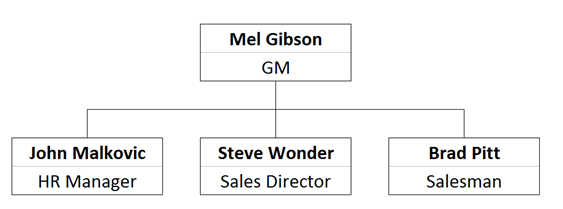
a) Structure of the company:
The structure should fit the size, goals, and culture of the company. It doesn’t matter if the structure is flat or vertical; it needs to help people make decisions and talk to each other clearly.
b) Roles and Responsibilities of Employees:
It is very important that roles and responsibilities are clearly outlined. This makes sure that there are no holes or overlaps in the work, and that everyone on the team knows what they need to do.

c) Routes of Communication:
The chain of command can’t work well without good routes of communication. It is important that information moves freely and correctly throughout the company, so these channels should make it easier for people at all levels to talk to each other.
e) Business Culture:
The culture of the company should back and strengthen the chain of command. It should urge people to respect the hierarchy while also making the workplace more open and collaborative.
f) Ability to Change and Alignment with Business Goals:
The chain of command should be able to bend to fit new business conditions. It needs to be in line with the long-term goals and strategies of the organization, making sure that the hierarchical structure helps the company reach its general goals.
g) Resolution of Conflicts and Preservation of Order:
A clear chain of command is very important for settling conflicts and preserving order, especially during emergencies. It makes it clear how to deal with problems and make choices when time is short.
6. Impact on Different Stakeholders
Different people in a company are greatly affected by how a chain of command is set up and how it works. Let’s look at these effects:
Management:
A clear chain of command makes it easier for the management team to delegate tasks and keep an eye on things. It helps managers keep a better eye on progress, deal with problems quickly, and make sure that their teams are working properly to reach the organization’s goals.
Employees:
It’s good for employees to know what their jobs and responsibilities are and who they report to. This clarity not only makes them happier and more secure in their job, but it also helps their professional growth by showing them how to move up in their work.
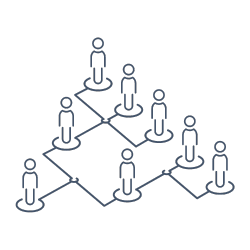
Customers:
A well-established chain of command in a business usually means that customers will get regular, high-quality service. When workers know who to ask for help and approvals, problems and questions from customers can be fixed faster and better.
7. What happens in Lack of Chain of Command?
If a company doesn’t have a clear chain of command, it can lead to a number of bad things. Some of these are:
- Confusion and waste
- Low morale
- Customer Satisfaction
- Organizational Competitiveness
- Problems with Decision-Making and Accountability
If there isn’t a clear chain of command, workers might not know what their jobs are or who they should report to. This can slow down work because people may do the same things twice or forget to do them. Also, workers often get frustrated and have low morale. When people aren’t sure how to make decisions or move up in their careers, they may become unhappy and lose drive.
Lastly, the lack of responsibility can cause people to make bad decisions and make the company less effective overall.
8. Historical and Contemporary Applications
The idea of a chain of command and how it is used today have changed a lot from its historical roots to its modern uses in many areas. Let’s look at these possible uses:
Historical Perspective
- The Industrial Revolution: During this time, the official idea of a chain of command became more well known. During this time, small, family-run businesses gave way to bigger, more complicated ones. This meant that management and communication had to be more organized.
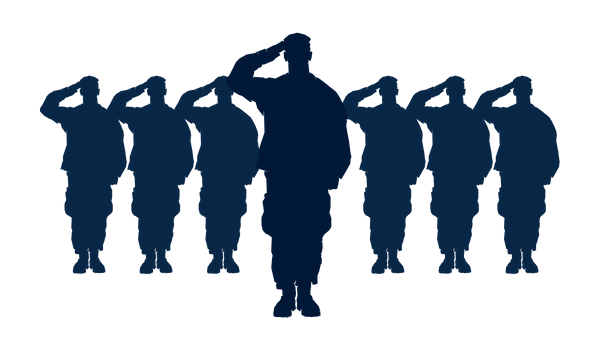
- Military Influence: Throughout history, the military has had a big impact on how hierarchical systems have grown. Military groups with a clear and strict chain of command were a model for early businesses that wanted to keep things in order and have a clear line of authority.
Contemporary Applications
- Healthcare: A clear chain of command is very important for making sure patients are safe and getting good care. Everyone has a job to do, from doctors to nurses to support staff. Knowing this order makes sure that everyone can communicate clearly and quickly, especially in an emergency.

- Business: All modern companies, no matter how big or small, use some kind of chain of command to make communication and making decisions easier. It makes it easier to manage big projects, work together across teams, and make sure that the organization’s strategies and goals are all in line with each other.

- Construction: A clear chain of command is necessary to keep track of jobs, make sure everyone is safe. Also, they need to stick to deadlines on construction projects.
The changing needs of groups can be seen in how the chain of command has changed over time. This idea has been a key part of good organizational management for a long time, from rigid, hierarchical systems to more flexible, adaptable ones today.
9. How to Create a Chain of Command Structure?
You can use various tools to create organizational chain of command structures, which may include spreadsheets or presentation tools. So, Microsoft Excel is one of most common programs to build organizational charts.
You can use SmartArt graphics or basic shapes and lines to create org charts in Excel.
But if you do not want to spend time and energy for building these diagrams, you can simply use ready to use tools.
The Org Chart Generator Excel Template and the Org Chart Google Sheets Template can be very helpful for businesses and organizations that want to change or update their chain of command.
– This organizational chart is by Someka’s Automatic Org Chart Generator –
Key Features:
- One-click organizational chart creation
- Easy to update
- Automatic
- Ready-to-use
- Provided in Excel and Google Sheets
These tools help you see and set up the organizational hierarchy.
10. FAQ’s on Chain of Command
In this part, we’ll answer some of the most common questions people have about the chain of command in order to help you understand this important organizational idea better.
Is there another way to say chain of command?
Yes, the line of command is also known as the organizational hierarchy or the hierarchical structure. The structured nature of authority and communication in a company is emphasized by these words.
Why is chain of command so important?
For several reasons, the chain of leadership is very important:
- Clear Communication: This makes sure that information moves smoothly throughout the business.
- Quick Decision-Making: It makes it clear who has the power to make choices, which cuts down on delays and uncertainty.
- Responsibility and accountability: Making jobs clear helps hold people responsible for their actions and choices of what to do.
- Organizational Structure and Stability: This gives an organization a way to run and be managed in a structured way.
What is the CEO chain of command?
A normal business structure puts the CEO (Chief Executive Officer) at the top of the chain of command. There may be different levels of top management, middle management, and front-line staff below the CEO. The exact structure is based on how big and complicated the group is.
How do you make a chain of command?
To make a chain of command, you must:
- Define Roles and Responsibilities
- Set up reporting lines
- Set up communication protocols
- Meeting the needs of the organization
- Visualize your organizational structure
Recommended Readings:
How to Create an Org Chart in Excel?
HR Org Chart: All You Need About Human Resources Organizational Structures
10+ Editable Org Chart Templates and Examples for Excel and PDF




